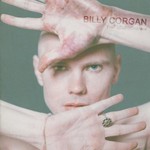TheFutureEmbrace
Studio Album by Billy Corgan released in 2005All Things Change | |
Mina Loy (M.O.H.) | |
The CameraEye | |
toLOVEsomebody | |
A100 | |
DIA | |
Now (and Then) | |
I'm Ready | |
Walking Shade | |
Sorrows (In Blue) | |
Pretty, Pretty Star | |
Strayz |
TheFutureEmbrace review
The Future Embrace is the first solo album ever released by Billy Corgan – the revered singer/songwriter/guitarist whose groundbreaking work with The Smashing Pumpkins defined modern rock as shockingly affirmative, even romantic. Corgan's most intimate set of songs yet, the hauntingly beautiful The Future Embrace brings together his astonishing past and promising present. Now, a decade after his star shone as bright as it probably ever will, Billy Corgan has stepped out on his own with an album influenced by the '60s, '70s, and especially the '80s, but which contains none of the soft-loud-soft-loud '90s rock he played such a major role in popularizing. With production help from Bjorn Thorsrud and Nitzer Ebb's Bon Harris – both of whom worked on the The Smashing Pumpkins' most synthetic release, Adore – The Future Embrace is an electronically charged album full of manufactured beats and dominating keys.
The album opens with All Things Change, propelled by a simple canned drumbeat and a wash of restrained '80s guitar, which sets the tone for the next 41 minutes. Corgan sings softly but pointedly, commanding the listener’s attention without being overbearing. Many musicians seem to have a difficult time copping to their actual influences, but Corgan is willing to give shout-outs to everyone from David Bowie to Joy Division to The Sisters Of Mercy to Echo & The Bunnymen. This is all stuff the 38-year-old Corgan grew up with, so he knows what he's doing, and he's done an excellent job of avoiding the derivative trap so many current retro acts are stuck in. The Camera Eye uses a Radiohead-referencing guitar line to lead its verses into one of the album’s best choruses. To Love Somebody, a failed Bee Gees cover thanks to its exhausting chorus, is the first hiccup, but Corgan rebounds nicely with A100. And even though the New Order-esque Mina Loy (M.O.H.) and the dramatic, Psychedelic Furs-flavored DIA aren't going to knock Mariah Carey or Gwen Stefani off the top of the charts, he's still worth the price of admission.
His lyrics still deal primarily with the thrills of falling in love, but read far more poetically. And the music is vastly improved, too. To his extreme credit, Corgan isn't trying to obscure his pain and uncertainty behind layers of guitar distortion and sonic dissonance the way he did with The Smashing Pumpkins, instead he's employed a rather restrained hand as he tries to work his way out of this psychic maze of his own making, cavorting with the ghosts of his past, present and future. The electronic sound of The Future Embrace practically demands that people compare it to Adore, but the actual production of the songs bears more resemblance to MACHINA, as Corgan performs many of the same aural tricks found on The Smashing Pumpkins’ last commercial gasp. As an artist, Corgan is still finding himself – an unexciting but truthful revelation. No longer interested in howling outward screams of pain and desperation, he continues to carve himself a brighter path toward artistic fulfillment; only the path is less definitive. The Future Embrace is a tremendous and noble effort from a major talent.

